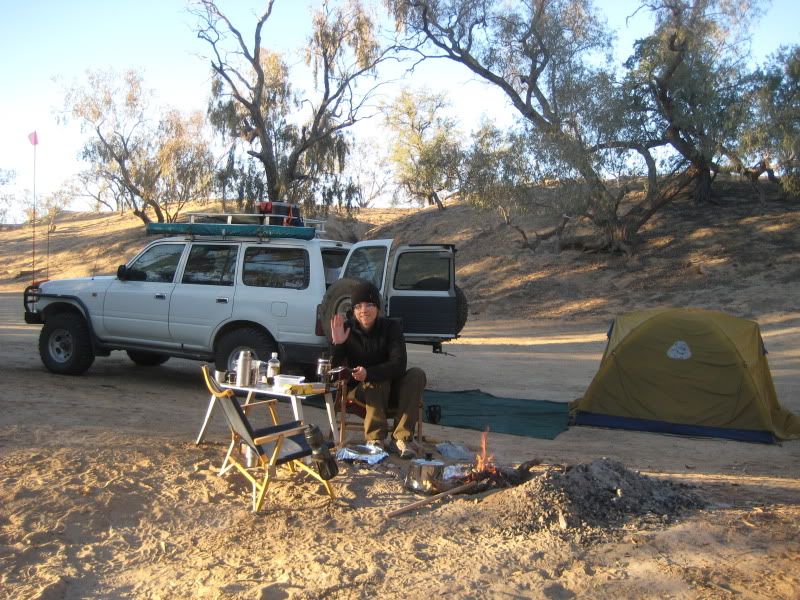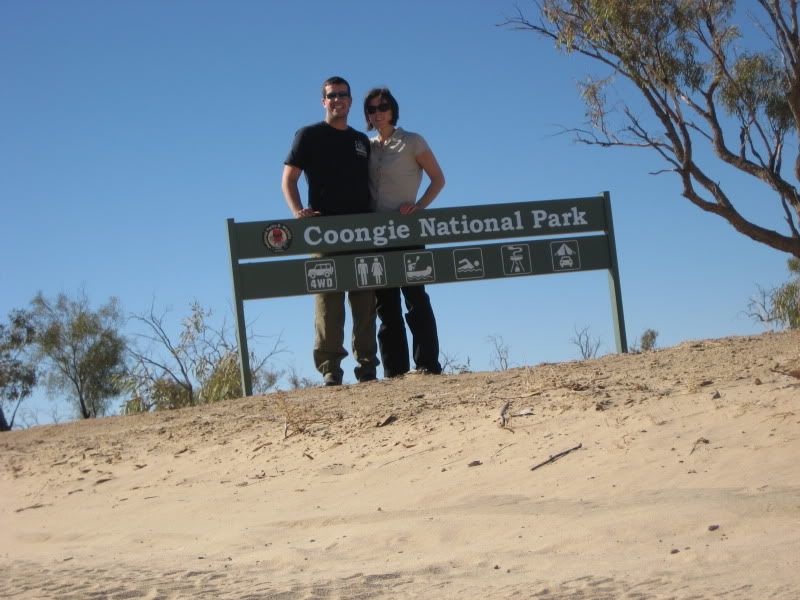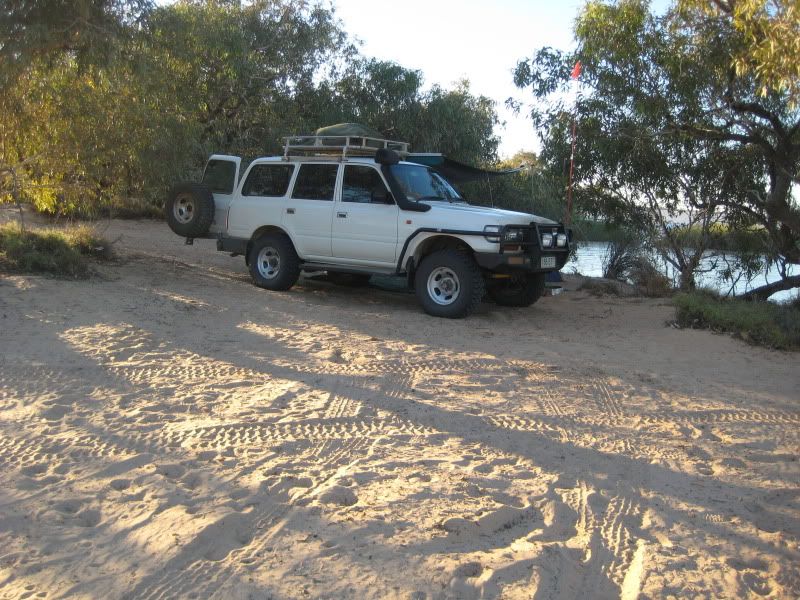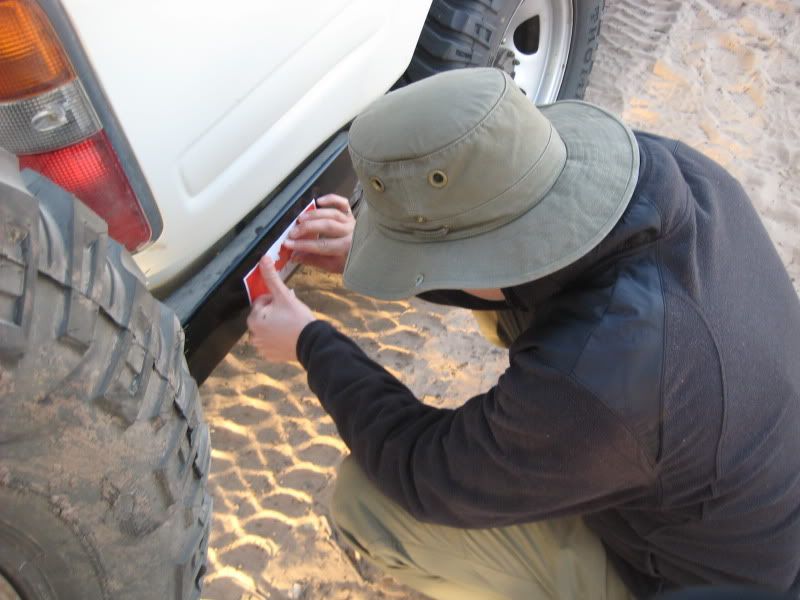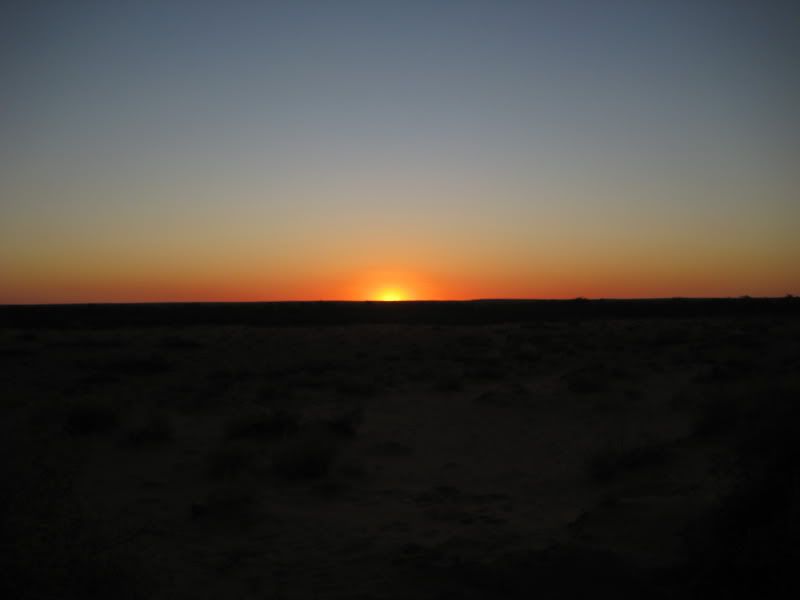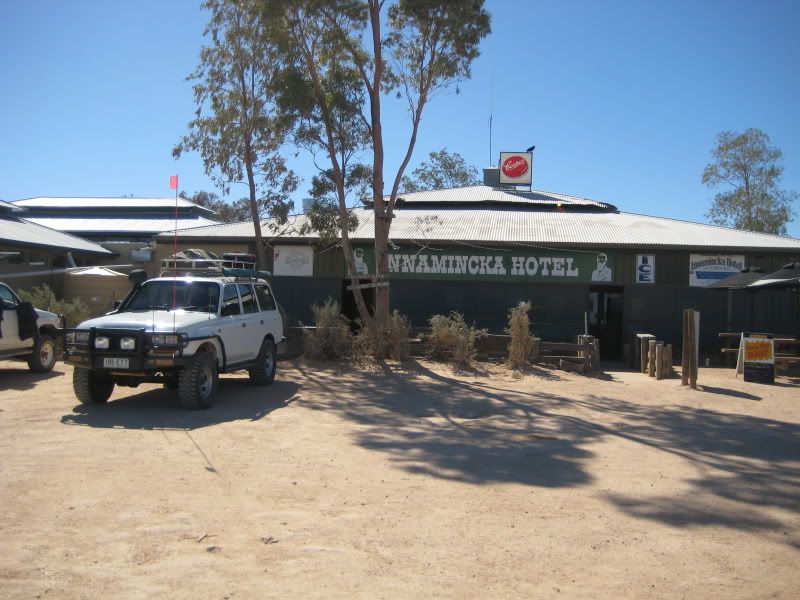p1michaud
Expedition Leader
Martha's contribution to the thread.
Days 4 & 5 – 28 & 29 July, Innaminka to Coognie Lakes (~110 Km).
Martha wanted to contribute a bit as well so she wrote this part.
There is nothing better than the taste of brekkie cooked on the open fire. The eggs, toast and bacon all become smoke infused and taste so much better. Even the coffee tastes better. I later read the recipe for authentic billie tea used by generations of cattleman involved actually keeping the top off while water boils to get that smoke flavour. We had a campfire breakfast and packed up camp to head for Coongie Lakes National Park. I had researched the park and figured that if we weren't going to make it all the way to Lake Eyre, the Coongie Lakes is the next best thing. Like Lake Eyre, Coongie Lakes is in the Lake Eyre catchment so its water comes from Northern Queensland. Pierre and I took the only road in from Innamincka. It was in much worse shape than the previous roads we had been on but if just means that you have to slow down. We didn't pass one car on the 200km ride. We saw what looked like two Droughtmasters cattle and questioned what they could be eating a way out here. We arrived!

The first sign of the lakes looks like a mirage. You would never imagine that after 200kms of dry and dust, you would come across the most beautiful lakes you have ever seen. We found a perfectly good campsite and went about relaxing. I can't figure out how all the birds know where to go but they just do. The first night we saw a flock of about 20 black swans. They went about their business at dusk feeding and talking to one another. It was quite a sight to see them flying above the lake all in unison and all just being themselves. It was extraordinary to be this close wildlife. Pierre mentioned that in Cooper's Creek we saw pelicans well we saw many more on our visit to the lakes. They fished as we watched. We also saw species of ducks, gulls, and parrots.
More information about Coognie Lakes
One of the most memorable moments of our visit to the Lake are the sunsets and sunrises. I don't have to say much. I think the pictures say it all. I now know to look behind me when the sun sets…this is where the colour really is.
Sunset:

and turn around and here is what you see:
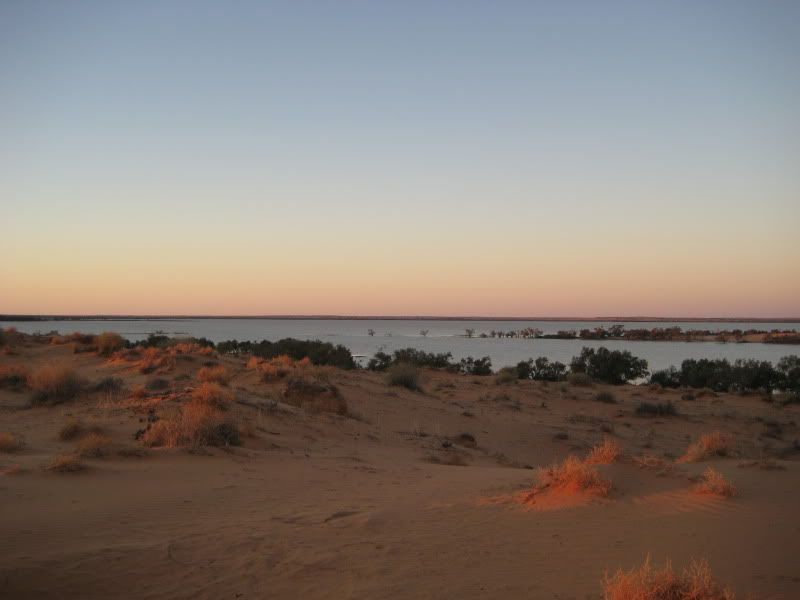
I am an early bird…always have and always will. I got up at dawn to watch what was going on while Pierre stayed bundled up in the tent. The birds are all very active early in the morning. . If I am ever having a bad day…I will just think about this moment and how all the birds are just going about their morning routine without a care in the world. Here are a few pictures that I took:



On the second day there we spent the day touring around the lakes. I'm a bushwalker and needed to get my legs moving after all the driving. Pierre wanted to see how he could make out in the sand tracks. We also ran into a few more campers which was nice. At least we weren't completely alone. On thing that really impacted me was the devastation that the rabbit populations has caused. Most of the shrubs and trees around the Lakes have been nibbled off. There were many signs of rabbits although we didn't see any. I wondered what plans the South Australia government had to protect the remaining flora? Rabbits were originally introduced back in the 18th century by European settlers. Wiki has a good summary of rabbits in Australia although there doesn't seem to be any fast solution to getting rid of the problem.
Pierre and I noticed this large area of shells. Pierre later heard from a friend that this is where the Aboriginal used to gather to feast on the fresh water shell fish. They are called shell middens . It is very interesting to see.

To be continued...
Days 4 & 5 – 28 & 29 July, Innaminka to Coognie Lakes (~110 Km).
Martha wanted to contribute a bit as well so she wrote this part.
There is nothing better than the taste of brekkie cooked on the open fire. The eggs, toast and bacon all become smoke infused and taste so much better. Even the coffee tastes better. I later read the recipe for authentic billie tea used by generations of cattleman involved actually keeping the top off while water boils to get that smoke flavour. We had a campfire breakfast and packed up camp to head for Coongie Lakes National Park. I had researched the park and figured that if we weren't going to make it all the way to Lake Eyre, the Coongie Lakes is the next best thing. Like Lake Eyre, Coongie Lakes is in the Lake Eyre catchment so its water comes from Northern Queensland. Pierre and I took the only road in from Innamincka. It was in much worse shape than the previous roads we had been on but if just means that you have to slow down. We didn't pass one car on the 200km ride. We saw what looked like two Droughtmasters cattle and questioned what they could be eating a way out here. We arrived!

The first sign of the lakes looks like a mirage. You would never imagine that after 200kms of dry and dust, you would come across the most beautiful lakes you have ever seen. We found a perfectly good campsite and went about relaxing. I can't figure out how all the birds know where to go but they just do. The first night we saw a flock of about 20 black swans. They went about their business at dusk feeding and talking to one another. It was quite a sight to see them flying above the lake all in unison and all just being themselves. It was extraordinary to be this close wildlife. Pierre mentioned that in Cooper's Creek we saw pelicans well we saw many more on our visit to the lakes. They fished as we watched. We also saw species of ducks, gulls, and parrots.
More information about Coognie Lakes
One of the most memorable moments of our visit to the Lake are the sunsets and sunrises. I don't have to say much. I think the pictures say it all. I now know to look behind me when the sun sets…this is where the colour really is.
Sunset:

and turn around and here is what you see:

I am an early bird…always have and always will. I got up at dawn to watch what was going on while Pierre stayed bundled up in the tent. The birds are all very active early in the morning. . If I am ever having a bad day…I will just think about this moment and how all the birds are just going about their morning routine without a care in the world. Here are a few pictures that I took:



On the second day there we spent the day touring around the lakes. I'm a bushwalker and needed to get my legs moving after all the driving. Pierre wanted to see how he could make out in the sand tracks. We also ran into a few more campers which was nice. At least we weren't completely alone. On thing that really impacted me was the devastation that the rabbit populations has caused. Most of the shrubs and trees around the Lakes have been nibbled off. There were many signs of rabbits although we didn't see any. I wondered what plans the South Australia government had to protect the remaining flora? Rabbits were originally introduced back in the 18th century by European settlers. Wiki has a good summary of rabbits in Australia although there doesn't seem to be any fast solution to getting rid of the problem.
Pierre and I noticed this large area of shells. Pierre later heard from a friend that this is where the Aboriginal used to gather to feast on the fresh water shell fish. They are called shell middens . It is very interesting to see.

To be continued...
Last edited:

